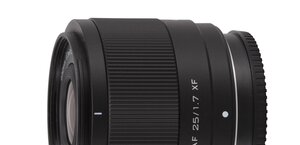Sigma S 150-600 mm f/5-6.3 DG OS HSM
11. Summary
- very solid, weather sealed casing,
- excellent image quality in the frame centre for the whole range of apertures and focal lengths,
- good performance on the edge of the APS-C/DX,
- low chromatic aberration,
- spherical aberration corrected without reservations,
- negligible distortion,
- very good coma correction,
- imperceptible astigmatism,
- low vignetting on the APS-C/DX sensor,
- efficient and silent autofocus.
Cons:
- work against bright light could have been better,
- too high vignetting level on full frame.
After the launch of the very well-done Tamron 150-600 mm I was very curious what the answer of Sigma would be. I admit the answer exceeded my expectations – Sigma presented two lenses with the same parameters but differing in some properties, build quality and price. It seems that the cheaper and physically lighter model, belonging to the Contemporary line, is supposed to compete directly with the Tamron; how it compares can only be told after finishing its full test. The Sport line model, examined by us here, is optically better than the Tamron in almost every testing category (only the vignetting correction of the Tamron was noticeably better). Still you should remember that the Sigma is also almost two times more expensive than the Tamron and heavier by almost one kilogram. It is a really big difference. As the Tamron still can be considered a walk-around lens - at a push you can take it to a stroll in a park or in a forest and use without any tripod - the Sigma S 150-600 mm can hardly be called so. A set consisting of the Sigma and a good quality camera body can weigh as much as 4 kilograms – not exactly something you can carry around for hours; mind you it requires also a support in a form of a tripod or a monopod. All of it should be taken into consideration before the purchase.
Please Support UsIf you enjoy our reviews and articles, and you want us to continue our work please, support our website by donating through PayPal. The funds are going to be used for paying our editorial team, renting servers, and equipping our testing studio; only that way we will be able to continue providing you interesting content for free. |
- - - - - - - - - - - - - - - - - - - - - - - - - - - - - - - - - - - - - - - - - - - - - - - -
Of course complaining about the weight of any piece of optical equipment is a bit of misunderstanding. A lightweight, plastic lens with a small number of optical elements inside is perhaps perfect for a walk but it will never be durable or optically good. A solid instrument, with a huge front element system and great optical design has to weigh a lot – the Sigma is, after all such an instrument.
Let me repeat once again something I’ve already stated in this test. The Sigma C 150-600 mm is going to hit the shelves in our shops pretty soon. If it is comparable to the Tamron 150-600 mm we will have as many as three very well-done constructions to choose from and our choice will be limited only by our personal tastes – a very good situation for the customers.






